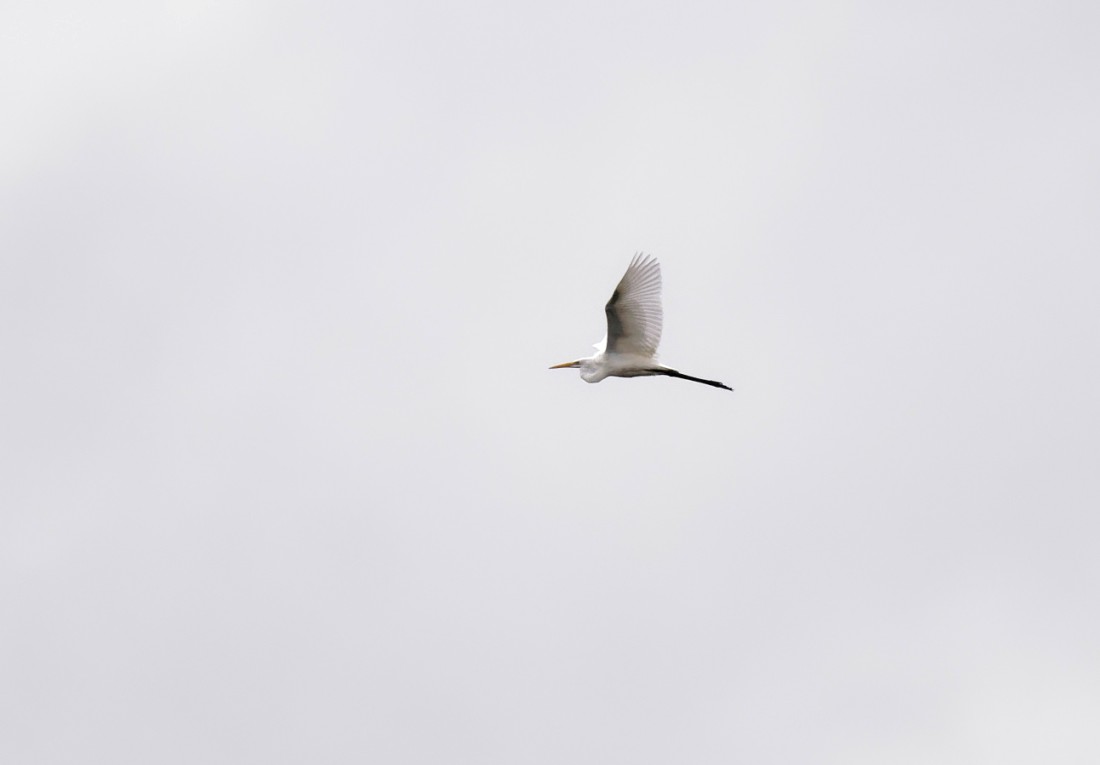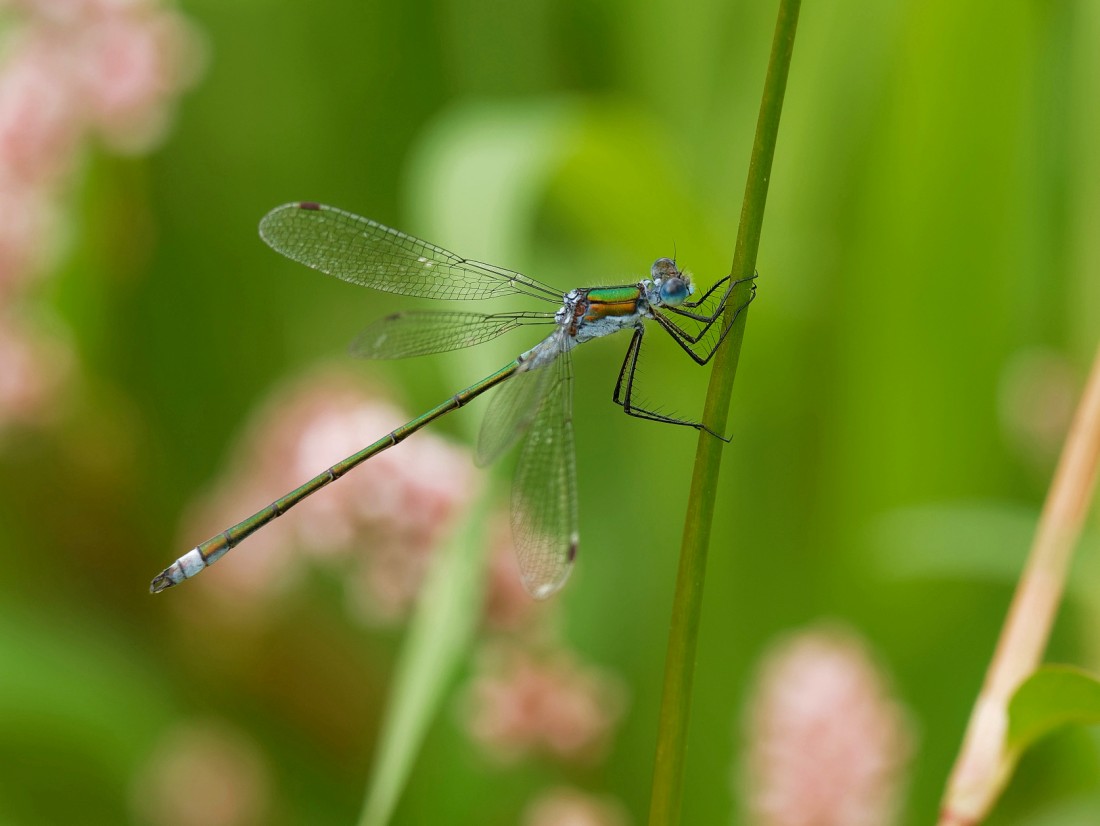Woolston Eyes Monthly Sightings
2020-08-27
While it felt like a quiet morning on No.3 bed at Woolston Eyes, we slowly accumulated some nice sightings of some locally scarce birds. The two Green Sandpipers on the Morgan Hide scrape soon after dawn were to be expected, as they are an almost daily sight in autumn, as was the single Black-tailed Godwit. The Cuckoo which flew across the southern end of the bed was less expected, though it has been a much better than average year for the species. It may be that the resurgence of Ragwort across the Reserve has contributed to this as Cinnabar Moth caterpillars, which feed on Ragwort, are a primary food source for juvenile Cuckoos. The female Garganey, which arrived a couple of days ago, was then re-found, looking settled in front of the South Screen. Wandering round the North Meadow produced another surprise, when a juvenile Green Woodpecker bounded over to drop into a stand of trees. Green Woodpeckers breed to the south of the Ship Canal and are occasionally encountered at the eastern end of the Reserve but are very scarce on No.3 bed. Back in the Morgan Hide the day was rounded off with good views of Hobby, Peregrine, Kingfisher, Water Rail and 8 passing Swifts. Photo of a Greylag Goose Cheers David (with David Spencer, Kieran Foster and Michael Miles)
Submitted by: David Bowman
2020-08-25
A rather rain-swept morning, combining some birding from the Morgan Hide with a contractor’s meeting on No.4 bed. During the latter, a Marsh Harrier swept across the flooded part of the new wetland, flushing Teal and Gadwall. On No.3 bed, the highlight was the two Hobbies, one of which was hawking for insects on and off for a large part of the morning. While, due to the raised water levels, waders were scarce with just the odd Snipe and Black-tailed Godwit, there was plenty to enjoy in the antics of the constantly squabbling juvenile Lapwings in front of the hide. Visible passage consisted of aerial feeders brought down by the squalls, including 6 Swifts, 40 House Martins, 10 Swallows and 12 Sand Martins. Photo of a juvenile Lapwing Cheers David (with David Spencer and Alan Warford)
Submitted by: David Bowman
2020-08-23
This link is to ashort video from the last couple of days showing: Green Sandpiper, Black-tailed Godwit, Water Rail, Kingfisher, Grey Heron, Little Egret, Raven, Hobby and Marsh Harrier.
To watch David’s video CLICK HERE…. or copy this link into your browser, https://www.youtube.com/watch?v=ardWQdVEejU
Cheers David
Submitted by: David Bowman
2020-08-22
It was a morning of intermittent showers at Woolston Eyes, so we spent our time scanning for migrants from the Morgan Hide. Early on, three Green Sandpipers and a Black-tailed Godwit were the main sightings, until a Marsh Harrier arrived and circled the bed before drifting off to the east. More widely, a small movement of Marsh Harriers was noted, with some arriving on the east coast and one also passing over Winter Hill. Two Hobbies then appeared, likely to be a locally breeding pair, hopefully with large young about to fledge, so we’ll be alert, over the next few weeks, for the appearance of any juveniles. As ever, one of the local Kingfishers perched on a post to catch fish in front of the hide. Otherwise, migrants were in short supply, with just one Swift, one Sand Martin and eight Swallows noted. Photo of a Little Egret from earlier in the week. Cheers David (with David Spencer, Alan Warford and Brian Baird)
Submitted by: David Bowman
2020-08-19
An entertaining morning on No.3 bed, starting with a Badger ambling along the Canal track as I arrived. It was soon evident that there had been another arrival of Green Sandpipers, with 5 counted in front of the Morgan Hide, only one of which was ringed, along with singles of Black-tailed Godwit and Snipe. Two Water Rails then spent some time out on the scrape and a Kingfisher arrived to catch five small fish (probably Sticklebacks) in successive dives. Dave Riley then reported a Great White Egret passing over No.1 bed, before a Little Egret dropped in to feed on the scrape for a short while before carrying on its way. While Little Egrets are now very common coastally in the north-west, they remain surprisingly scarce on the Reserve. One aspect of our plan for the new No.4 bed wetland is to create two large areas of flooded woodland, in the hope of attracting herons and egrets to breed. Research indicates that the limiting factor, for such birds settling to breed, is food availability, which is in turn dictated by the size and productivity of the adjacent wetland feeding area. Taken together, the four beds at Woolston Eyes should soon meet those criteria, so fingers crossed. Photo of the Little Egret Cheers David Bowman (with David Spencer)
Submitted by: David Bowman
2020-08-18
Record shot of one of today’s four Great White Egrets. Cheers David
Submitted by: David Bowman
2020-08-18
With last night’s thunderstorms and heavy overnight rain it looked good for finding something interesting this morning. Just after dawn 2 Green Sandpipers and 40 Lapwings were on the Morgan Hide scrape. Then the sighting of the day when four Great White Egrets (a record count for the Reserve) got up from somewhere to the right of the Hide and flew away to the north. That’s the third record this week of this, the largest of our Egrets. Then a juvenile Peregrine made several passes, low over the bed, flushing all the roosting waders and wildfowl. As the rain increased a Common Tern and an Oystercatcher passed through at speed while a Water Rail showed briefly. As ever, one of the local Kingfishers perched in front of the Hide for the benefit of the photographers present. The morning had more to offer, though, when a Hobby arrived to spend quite a while languidly hawking for dragonflies and two Ravens passed over. Counts over the morning included 15 Swifts and a few Sand Martins and Swallows. Photo of a KIngfisher Cheers David
Submitted by: David Bowman
2020-08-13
Another steaming hot morning, starting on No.3 bed before walking over to check out the Loop of No.4 bed. As is often the case on still, hot days, not much was moving. The only evidence of migration came from six Dunlin which flew around No.3 bed before heading south and from a couple of dozen Swallows which passed over. Other waders included five Green Sandpipers, two Common Sandpipers, four Snipe and four Black-tailed Godwits. Otherwise, it was a day for enjoying the large numbers of butterflies and sprinkling of dragonflies which were such a feature of warm days on the Reserve. Photo of a Brown Hawker Cheers David (with Alan Warford)
Submitted by: David Bowman
2020-08-11
I split my morning between scanning for waders from the Morgan Hide and walking on to No.4 bed to help our contractor with some technical issues with the first sluice for the new wetland. Birds along the way included: 2 Common Sandpipers, 6 Green Sandpipers, 5 Black-tailed Godwits, 5 Snipe, 2 Kingfishers and 4 Cetti’s Warblers. While I was on No.4 bed, David Spencer found a Red-legged Partridge on No.3, which, if my memory serves me right, is a first for that bed. Photo of some of the Snipe Cheers David
Submitted by: David Bowman
2020-08-08
It was one of those hot, still days awith little visible passage but excellent conditions for dragonfly surveying. In the light of this, we made an early start on No.3 bed before walking down to No.1 bed to survey the network of 21 pools there. Most of these have been created over the past couple of years and are now starting to mature, as evidenced by our recent dragonfly counts. As far as waders on No.3 bed were concerned, the 3 Green Sandpipers, 5 Black-tailed Godwits and a Common Snipe were typical of the past week or so. Walking down to No.1 bed it was pleasing to find a small stand of seven Broad-leaved Helleborines. This very understated orchid is uncommon in Cheshire and the Reserve holds an important population of well over 100 plants. The resident Peregrine pair were then perched by the Viaduct nest site and we later saw a juvenile male on the hunt. While not reaching the levels of the last survey of the pools, we still managed to find 7 Emperor Dragonflies, 1 Black-tailed Skimmer, 5 Blue-tailed Damselflies and 140 Common Darters. Finally, a couple of Little Ringed Plovers were nice to see, along with further evidence, via footprints, of the continued spread of Roe Deer on the Reserve. Photo of an Emperor Dragonfly Cheers David (with David Spencer, Alan Warford, Brian Martin, Sue Haddock and Colin Hamlet)
Submitted by: David Bowman
2020-08-06
On a warm, still day on No.3 bed, where not much seemed to be moving, we gradually accrued a decent number of interesting sightings. Early on, two Green Sandpipers, three Black-tailed Godwits and 30 Lapwings (mainly juveniles), were on the Morgan Hide scrape. Notable by their absence were the masses of juvenile Lesser Black-backed Gulls which have been a raucous feature of the bed recently. Two Ravens then flew east, before two more Green Sandpipers appeared, perching on one of the nest rafts, and three more Black-tailed Godwits dropped in. Of the local breeding birds, Kingfisher, Water Rail and Willow Tit were all viewable from the Morgan Hide. Another Green Sandpiper made five for the morning, just two of which were ringed. So, with six having been ringed over the week, at least nine individuals have been present on the bed this week. Swifts trickled south all morning, with just over 200 counted and a Hobby, as ever, was soaring over the east bank of the bed late on. Photo of some of the Godwits Cheers David (with David Spencer)
Submitted by: David Bowman
2020-08-02
This link is to a short video showing some of the birds from the past couple of days. It includes: Kingfisher, Grey Heron, Lesser Black-backed Gulls feeding young and predating a Moorhen chick, Brown Hawker and Emperor dragonflies, a late brood of Tufted Ducks, Oystercatchers, Black-tailed Godwits, a Green Sandpiper and a Little Egret. To watch David’s video CLICK HERE… or copy this link into your browser https://youtu.be/ySWqhli_Suk
Cheers David
Submitted by: David Bowman
2020-08-01
On No.3 bed, 2 Green Sandpipers, 3 Black-tailed Godwits, a juvenile Water Rail and a Kingfisher were the highlights. On No.1 bed a dragonfly survey produced counts of: 1 Emerald Damselfly, 15 Common Blue Damselflies, 12 Blue-tailed Damselflies, 2 Southern Hawkers, 2 Emperor Dragonflies and an astonishing 340 Common Darters. Butterflies included 1 Common Blue and 25 Gatekeepers, plus a Smooth Newt among the masses of froglets. Back in No.3 a Hobby made to high speed stoops at one of the resident Kestrels. Photo of an Emerald Damselfly Cheers David
Submitted by: David Bowman











